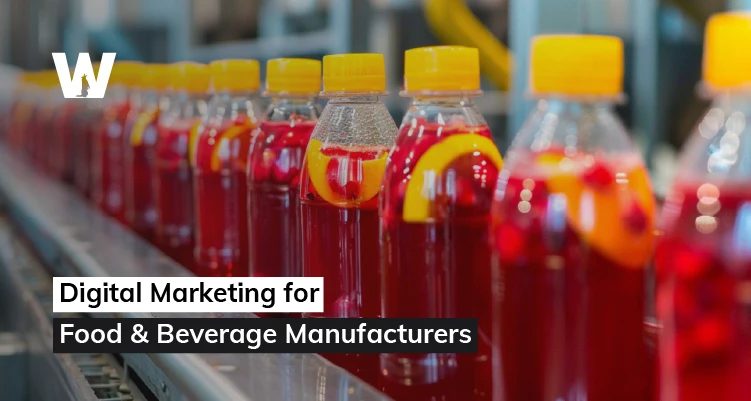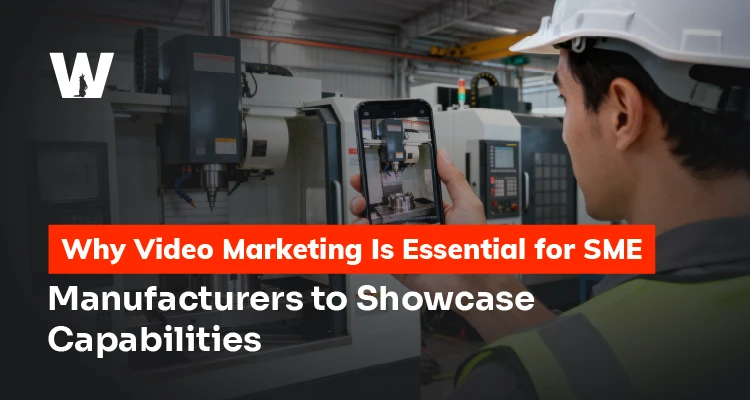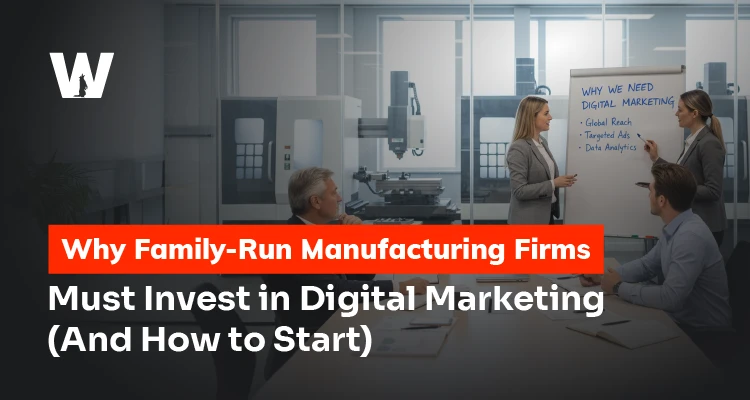Wraps up in 6 Minutes
Looking to scale your food or beverage manufacturing business? You're not alone—and you're not late. Today’s buyers—from procurement heads to retail distributors—aren’t attending trade shows first; they’re searching online. In fact, 87% of B2B food buyers now research digitally before connecting with a supplier. That means if your brand isn’t visible, you’re already behind.
The good news? Food and beverage manufacturers can boost market reach by 40–60% with the right digital marketing strategy—one that focuses on SEO, lead generation, branding, and omnichannel engagement.
This blog unpacks the exact strategies used by top food and beverage brands to capture attention, convert leads, and create a resilient online presence.
What is Digital Marketing for Food Manufacturing?
Digital marketing for food manufacturers encompasses all online strategies used to promote food processing companies, beverage producers, and packaged goods manufacturers to both B2B buyers and end consumers.
Unlike traditional marketing, digital marketing for the food and beverage industry focuses on:
- B2B lead generation for distributors, retailers, and institutional buyers
- Brand positioning in competitive FMCG markets
- Compliance-friendly content that meets food safety and labeling regulations
- Supply chain visibility for transparency-conscious consumers
The food manufacturing sector faces unique challenges including seasonal demand fluctuations, strict regulatory requirements, and the need to communicate both with business buyers and end consumers effectively.
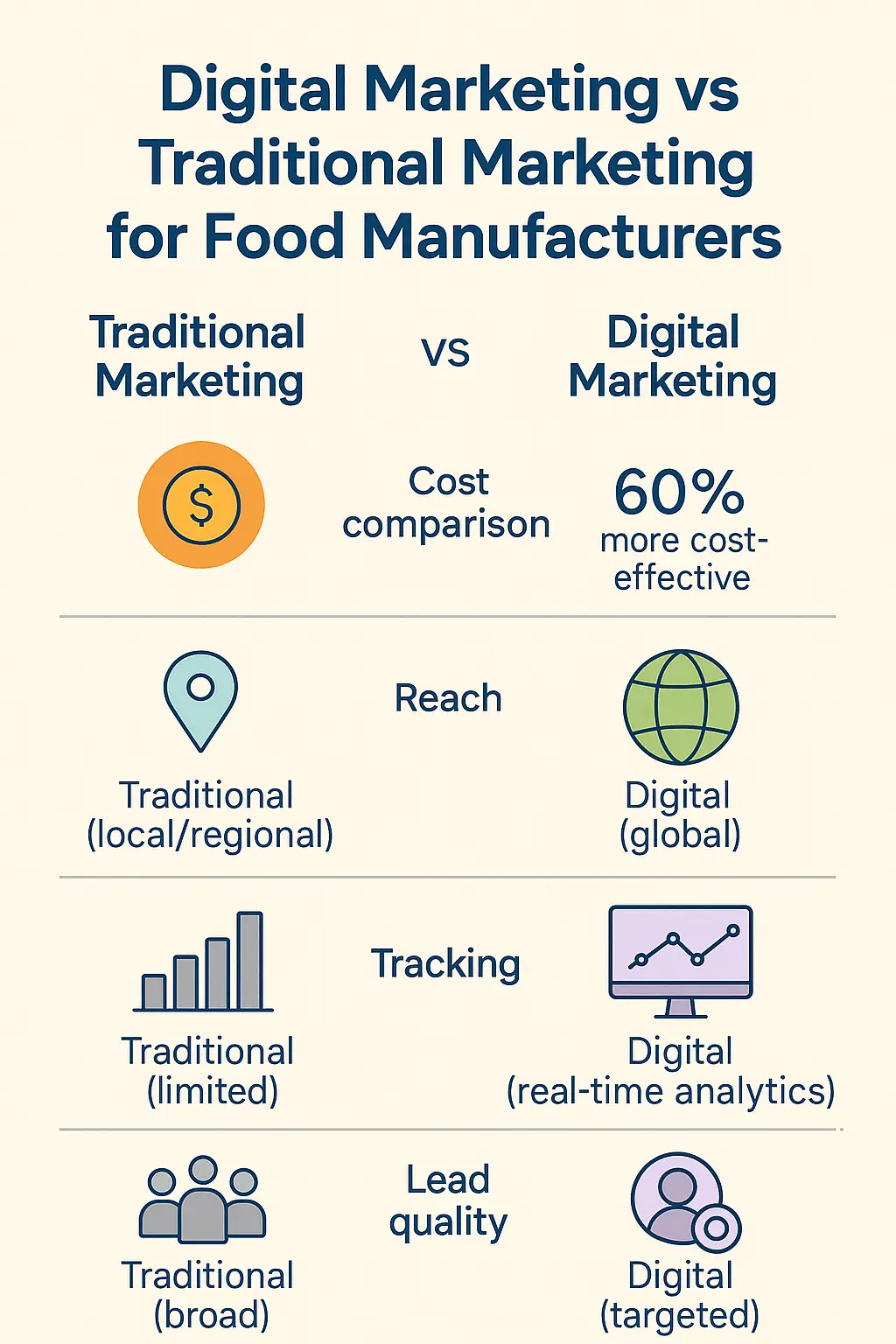
Why Food and Beverage Companies Need Digital Marketing
The food and beverage industry are experiencing a digital transformation that's reshaping how manufacturers connect with buyers and consumers.
1. Market Demand is Shifting Online
87% of B2B food buyers now research suppliers online before making purchasing decisions. This includes distributors, restaurant chains, and retail buyers who prefer digital-first interactions.
2. Competition is Intensifying
With over 2.6 million food and beverage companies globally, digital marketing provides the competitive edge needed to stand out in crowded marketplaces.
3. Consumer Expectations Have Evolved
Modern consumers demand transparency about:
- Ingredient sourcing and sustainability practices
- Nutritional information and health benefits
- Brand story and company values
- Product availability and distribution channels
Food manufacturing marketing strategies must address these expectations while maintaining B2B relationship building.
4. Regulatory Compliance Benefits
Digital marketing platforms offer better content control and audit trails compared to traditional advertising, helping food manufacturers maintain compliance with FDA, USDA, and international food safety regulations.
Understanding the B2B Buyer Journey in the F&B Industry
The B2B buyer journey for food manufacturers differs significantly from consumer purchasing patterns, involving multiple stakeholders and extended decision-making cycles.
Stage 1: Problem Recognition (Awareness)
B2B buyers identify supply chain gaps, quality issues, or expansion opportunities. Food service buyers research new suppliers when existing partnerships fail to meet demand or quality standards.
Stage 2: Information Gathering (Consideration)
Decision-makers evaluate potential suppliers through digital channels first. They review websites, read case studies, and assess certifications before initiating contact. This stage can last 3-6 months for significant partnerships.
Stage 3: Vendor Evaluation (Decision)
Buyers request samples, facility tours, and detailed proposals. Digital marketing content plays a crucial role in demonstrating expertise, reliability, and compliance capabilities during this critical evaluation phase.
Understanding this journey helps food and beverage companies create targeted content that addresses specific concerns at each stage, ultimately shortening sales cycles and improving conversion rates.
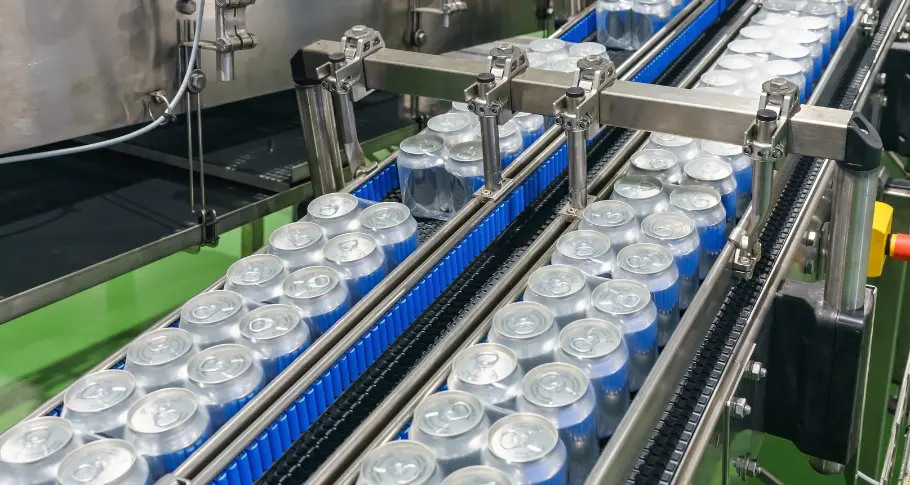
Best Digital Marketing Strategies for Food & Beverage Manufacturers
Here are the most effective digital marketing solutions for food businesses that drive measurable results:
1. Website Optimization and User Experience
A professional, mobile-optimized website serves as your digital storefront for B2B buyers and consumers alike.
Key optimization areas:
- Fast loading speeds (under 3 seconds)
- Mobile responsiveness for on-the-go buyers
- Clear product catalogs with detailed specifications
- Easy contact forms for quote requests
- Compliance badges and certifications display
Properly optimized websites generate 40% more qualified leads than outdated designs.
2. Search Engine Optimization (SEO)
SEO for food and beverage manufacturers ensures your products appear when buyers search for suppliers, or consumers look for specific food categories.
Effective SEO tactics include:
- Local SEO optimization for regional distribution
- Product-specific keyword targeting (e.g., "organic snack manufacturer")
- Industry compliance content (certifications, safety standards)
- Regular content updates about new products and industry trends
Companies investing in SEO see an average of 35% increase in organic traffic within 6 months.
3. Social Media Marketing (SMM)
Social media marketing for food producers builds brand awareness and showcases product quality through visual content.
Platform-specific strategies:
- LinkedIn : B2B networking and industry thought leadership
- Instagram : Product photography and behind-the-scenes content
- YouTube : Manufacturing process videos and educational content
- Facebook : Community building and customer testimonials
Visual content performs 94% better than text-only posts in the food industry.
4. Pay-Per-Click (PPC) Advertising
PPC advertising for food and beverage companies delivers immediate visibility for new product launches and seasonal campaigns.
High-performing PPC approaches:
- Google Ads targeting buyer intent keywords
- LinkedIn Ads for B2B decision-makers
- Display advertising on industry publications
- Retargeting campaigns for website visitors
Well-managed PPC campaigns achieve 300-400% ROI in the food manufacturing sector.
5. Content Marketing and Thought Leadership
Content marketing for the food and beverage industry establishes expertise while educating buyers about product benefits and applications.
Effective content types:
- Industry trend analysis and market insights
- Recipe development and usage guides
- Sustainability reports and corporate responsibility content
- Product specification sheets and technical documentation
Companies with consistent content marketing see 67% more leads than competitors.
6. Email Marketing and Lead Nurturing
Email marketing campaigns for food businesses to maintain relationships with distributors, buyers, and industry contacts.
Successful email strategies:
- Segmented buyer personas (distributors, retailers, food service)
- Product launch announcements with exclusive previews
- Industry newsletter with market updates and insights
- Automated drip campaigns for lead nurturing
Email marketing delivers an average $42 return for every $1 invested.
7. Video Marketing and Virtual Tours
Video marketing for food and beverage manufacturers showcases production quality, safety standards, and company culture.
High-impact video content:
- Virtual facility tours highlighting safety protocols
- Product demonstration videos showing applications
- Customer testimonial videos from satisfied buyers
- Behind-the-scenes content building brand trust
Video content generates 50x more engagement than text-based content.
8. Marketing Automation and CRM Integration
Marketing automation for food processing units streamlines lead management and buyer communication.
Automation benefits:
- Lead scoring based on buyer behavior
- Automated follow-ups for quote requests
- Seasonal campaign triggers for peak demand periods
- Customer lifecycle management for retention
Automation increases lead conversion rates by 25-30% on average.
Comparison Table: Digital Marketing Channels for Food Manufacturers
| Channel | Best For | Average ROI | Timeline to Results |
|---|---|---|---|
| SEO | Long-term organic growth | 400-500% | 3–6 months |
| PPC | Immediate visibility | 300-400% | 1–2 weeks |
| Social Media | Brand awareness | 200-300% | 2–3 months |
| Email Marketing | Lead nurturing | 4200% | 2–4 weeks |
| Content Marketing | Thought leadership | 300% | 2–6 months |
How to Choose the Right Digital Marketing Agency for Food and Beverage Brands
Selecting the right food and beverage marketing agency requires evaluating industry expertise, service capabilities, and proven results.
1. Industry Experience Matters
Look for agencies with domain expertise in manufacturing, healthcare, and finance sectors. These industries share similar B2B sales cycles and regulatory requirements.
Questions to ask potential agencies:
- Do you have case studies from food manufacturers?
- How do you handle industry-specific compliance requirements?
- What's your experience with B2B lead generation?
2. Service Integration Capabilities
The best marketing solutions for food businesses require multiple integrated services:
- SEO and Local SEO for organic visibility
- Performance Marketing with ROI-focused campaigns
- Social Media Marketing for brand building
- Content Marketing for thought leadership
- Web Design & Development for professional presence
3. Proven Track Record
Request specific metrics and case studies showing:
- Lead generation improvements
- Website traffic increases
- Conversion rate optimizations
- ROI from paid advertising campaigns
At Wolfable, we've helped food and beverage manufacturers achieve an average 150% increase in qualified leads within the first year of engagement.
Common Challenges and Solutions in Food Industry Digital Marketing
1. Challenge: Regulatory Compliance
- Food manufacturing promotion must comply with FDA, USDA, and international food safety regulations.
- Solution: Work with agencies experienced in compliance-friendly content creation that understands nutritional claims, labeling requirements, and advertising restrictions.
2. Challenge: Seasonal Demand Fluctuations
- Many food products experience seasonal sales cycles that traditional marketing struggles to address efficiently.
- Solution: Implement data-driven marketing strategies with automated campaign adjustments based on historical demand patterns and real-time market indicators.
3. Challenge: B2B vs B2C Messaging Balance
- Food manufacturers often need to communicate with both business buyers and end consumers simultaneously.
- Solution: Develop segmented content strategies with separate messaging tracks for distributors, retailers, and consumers while maintaining brand consistency.
4. Challenge: Product Differentiation
- In crowded FMCG and CPG markets, standing out requires more than product quality alone.
- Solution: Focus on brand story development highlighting unique value propositions, sustainability practices, and company heritage through compelling digital content.
5. Challenge: ROI Measurement
- Measuring return on investment (ROI) for digital marketing campaigns is often unclear, especially with long B2B sales cycles or fragmented B2C channels.
- Solution: Use integrated analytics and CRM tools to track customer journeys, set clear KPIs, and measure conversions with UTM tags and multi-touch attribution.
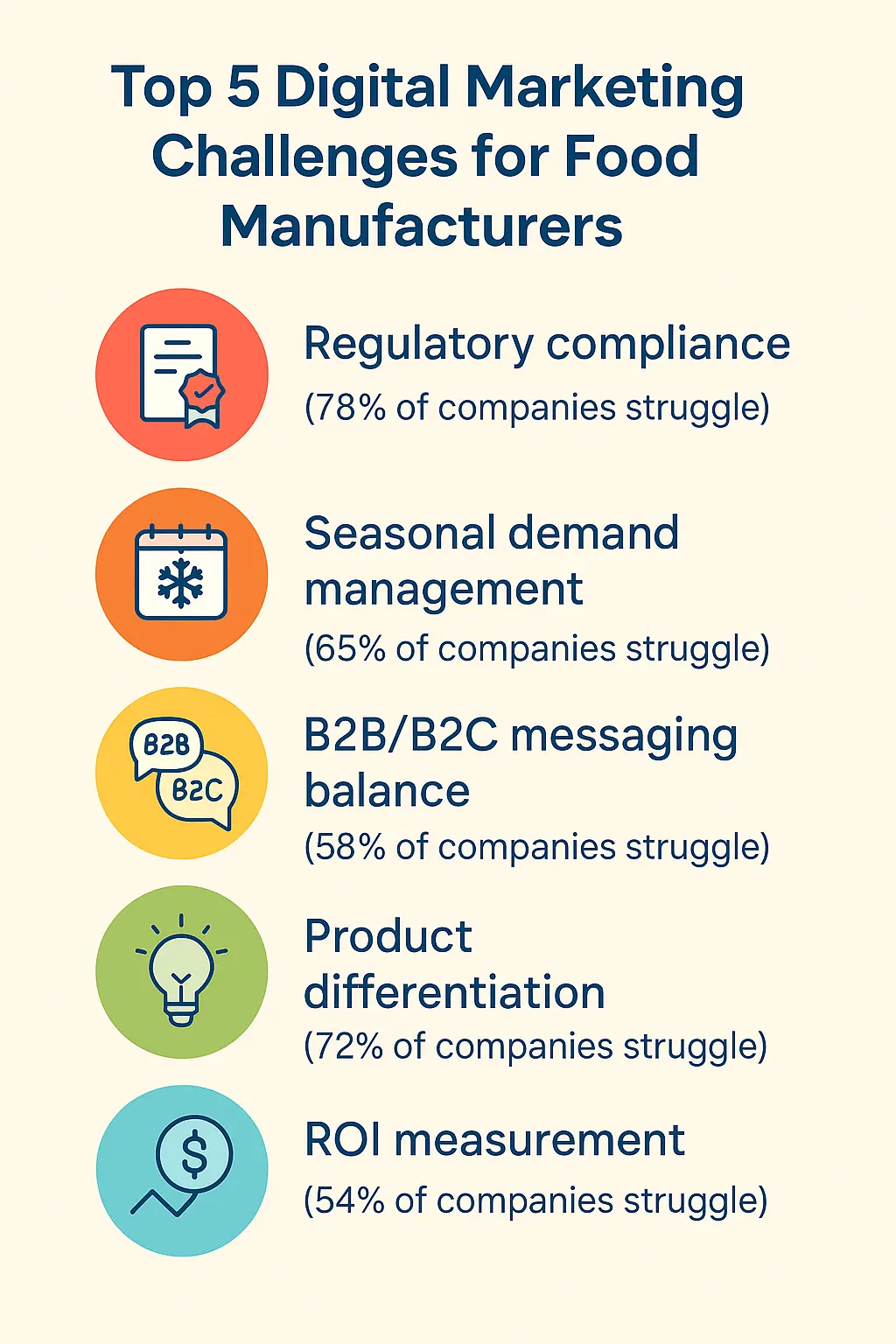
Measuring Success in Food Industry Marketing
Key Performance Indicators (KPIs)
Successful digital marketing for food companies requires tracking specific metrics that align with business objectives:
Lead Generation Metrics:
- Cost per qualified lead (target: 30-50% reduction year-over-year)
- Lead conversion rates (target: 8-12% for B2B food industry)
- Sales cycle length (target: 15-20% reduction)
Brand Awareness Metrics:
- Organic search visibility for target keywords
- Social media engagement rates (target: 3-5% for food brands)
- Website traffic quality and time on site
ROI Metrics:
- Marketing qualified leads to sales ratio
- Customer acquisition cost vs customer lifetime value
- Revenue attribution by marketing channel
Tools for Measurement
- Google Analytics 4 for website performance tracking
- CRM integration for lead qualification monitoring
- Marketing automation platforms for campaign performance
- Social media analytics for engagement measurement
Future Trends in F&B Digital Marketing
1. AI and Automation in Food Manufacturing Marketing
Artificial intelligence is revolutionizing how food manufacturers approach personalized marketing and customer segmentation.
Emerging AI applications:
- Predictive analytics for demand forecasting
- Automated content creation for product descriptions
- Chatbots for initial customer inquiries
- Dynamic pricing based on market conditions
2. Sustainability-Focused Marketing
Modern consumers prioritize sustainability, driving food manufacturers to showcase environmental responsibility through digital channels.
Sustainability marketing tactics:
- Carbon footprint reporting and reduction goals
- Sustainable packaging promotion and education
- Local sourcing stories and supplier partnerships
- Waste reduction initiatives and results
3. Omnichannel Marketing Integration
Omni-channel marketing for food brands creates seamless experiences across all customer touchpoints.
Integration strategies:
- Consistent messaging across digital and traditional channels
- Cross-platform retargeting for improved conversion rates
- Unified customer data for personalized experiences
- Synchronized campaign timing for maximum impact
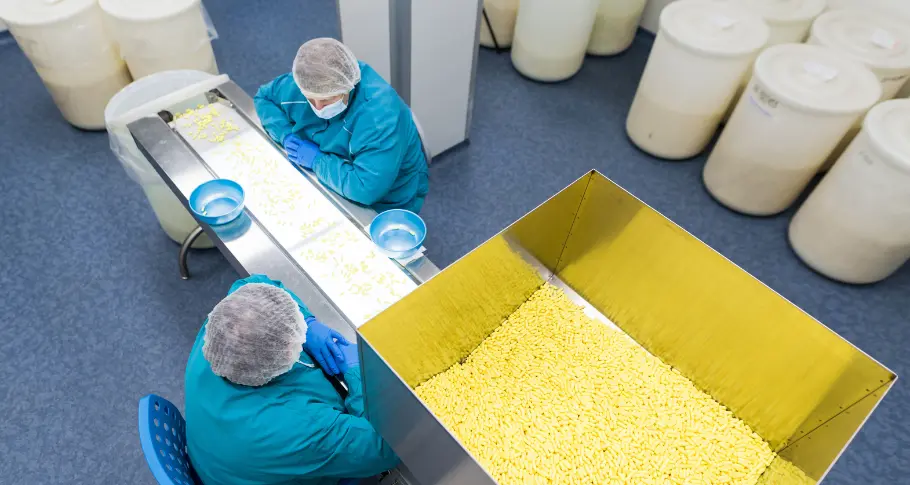
Ready to Transform Your Food & Beverage Manufacturing Business?
The food and beverage industry's digital transformation creates unprecedented opportunities for manufacturers willing to embrace modern marketing strategies.
Digital marketing for food manufacturers isn't just about online presence—it's about building sustainable competitive advantages through data-driven customer acquisition and retention.
Get Started with Professional Digital Marketing
At Wolfable, we specialize in helping food and beverage manufacturers grow their market presence through comprehensive digital strategies.
Our services include:
- SEO & Local SEO for improved organic visibility
- Performance Marketing with ROI-focused campaigns across platforms
- Social Media Marketing strategy and creative development
- PPC advertising on Google, Meta, LinkedIn, and YouTube
- Content Marketing and thought leadership development
- Web Design & Development for professional online presence
- Email Marketing and automation solutions
- Digital Strategy & Consultation for comprehensive growth planning
Take the Next Step
Ready to see how digital marketing can transform your food and beverage manufacturing business? Our team of specialists understands the unique challenges facing the food and beverage industry.
📞 Schedule a Free Consultation:
- Call us at +91 85113 93399
- Email us at contact@wolfable.com
- Explore our Healthcare industry expertise: Healthcare Digital Marketing
- Explore our Manufacturing industry expertise: Manufacturing Digital Marketing
Get your customized digital strategy consultation and see how leading food manufacturers are achieving 150% increases in qualified leads through strategic digital marketing.


